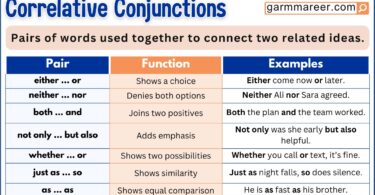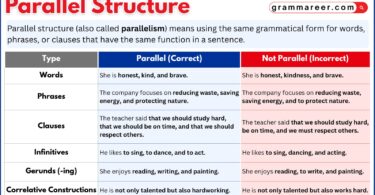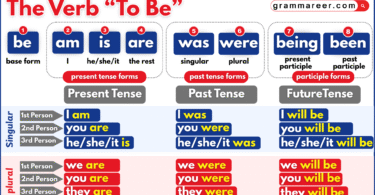Absolute possessive pronouns are unique in English grammar, allowing us to show ownership without repeating the noun itself. They are used to simplify sentences while making the speaker’s intent clear, cover their usage, and provide helpful examples to ensure a thorough understanding of this essential grammar tool.
Absolute possessive pronouns, or independent possessive pronouns, show ownership without a noun after them.
Examples:
Are mine, yours, his, hers and ours.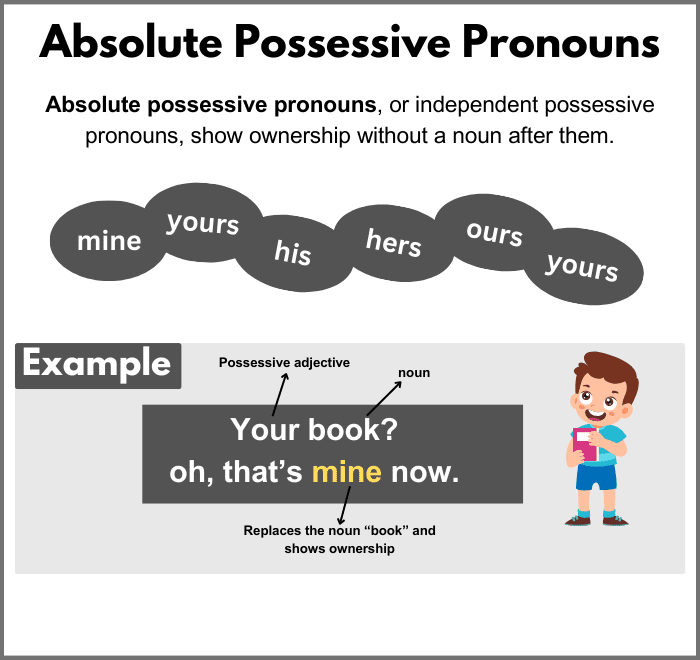
Table of Contents
Examples of Absolute Possessive Pronouns
Here are a few examples:
- This pen is yours.
“Yours” indicates the pen belongs to the person being spoken to.
- These shoes are mine.
“Mine” specifies ownership of the shoes.
- The car outside is theirs.
“Theirs” clarifies that the car belongs to a particular group.
Types of Possessive Pronouns: Absolute vs. Possessive Adjectives
English has two main types of possessive pronouns: absolute possessive pronouns and possessive adjectives. Here’s a quick look:
| Possessive Adjective | Absolute Possessive Pronoun |
|---|---|
| My | Mine |
| Your | Yours |
| His | His |
| Her | Hers |
| Our | Ours |
| Their | Theirs |
Possessive adjectives need a noun to complete them, as in “my book.” Absolute possessive pronouns, however, stand alone to show possession.
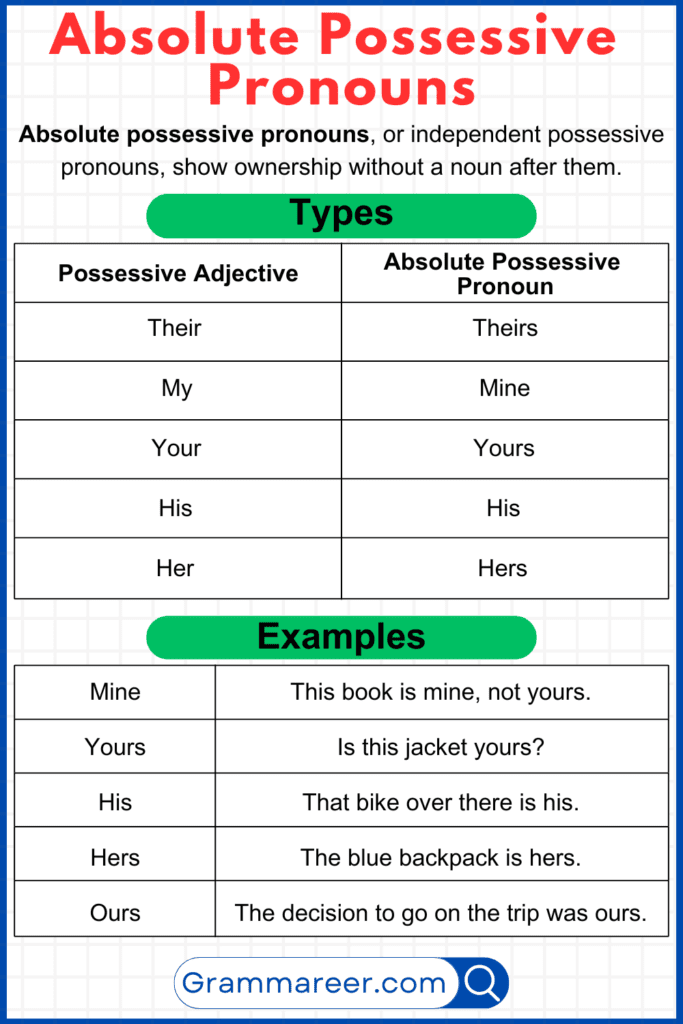
Why Absolute Possessive Pronouns Are Important
Absolute possessive pronouns are key to:
- Clarity: They simplify sentences by indicating ownership directly.
- Conciseness: They replace both the noun and the possessive adjective, making sentences shorter.
- Avoiding Repetition: They help avoid repeating nouns unnecessarily.
Tips for Using Possessive Pronouns
- Use it to Simplify: Instead of saying “This is my pen,” say “This pen is mine.”
- Avoid Confusion with Possessive Adjectives: Remember that possessive adjectives need a noun after them, while absolute possessives don’t.
- Practice Regularly: The more you use them, the more natural they’ll feel in conversation.
FAQs
Absolute possessive pronouns (like mine) stand alone, while possessive adjectives (like my) need a noun.
No, “its” is only used as a possessive adjective (e.g., its color).
Conclusion
Mastering absolute possessive pronouns helps make sentences more efficient and easier to understand. They replace possessive adjectives and nouns, allowing for clear and concise communication. Practice using them regularly to make your English sound more fluent and natural.
Read More


